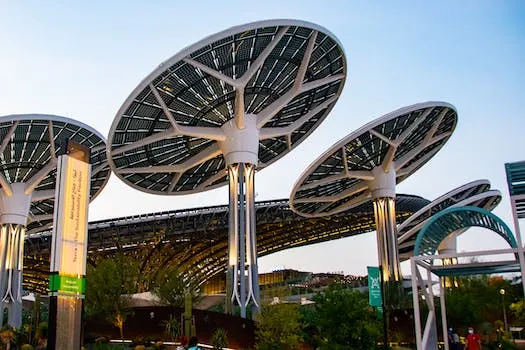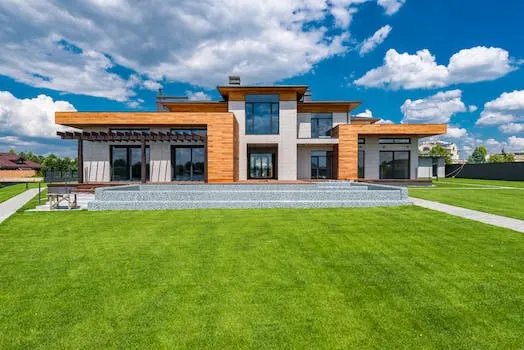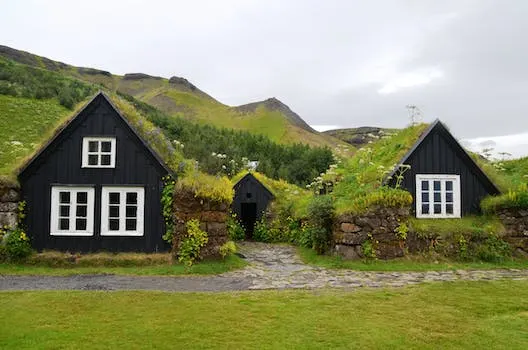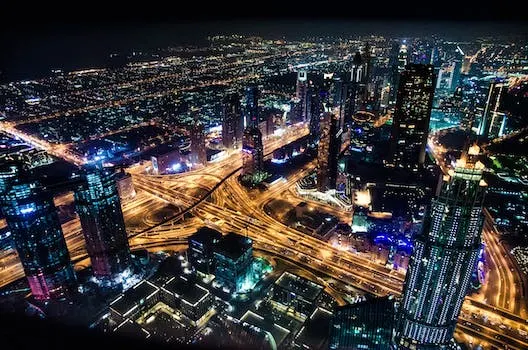
Sustainable Architecture: Understanding the Basics
sustainable architecture is a concept that has become increasingly important in recent years as the world faces the potential consequences of climate change and dwindling natural resources. It is an approach to building design and construction that seeks to reduce the environmental impact of buildings while still providing a comfortable, safe, and aesthetically pleasing living space. Sustainable architecture takes into account not only economic considerations but also social and environmental well-being. This means that sustainable architecture must be designed with an eye towards creating a strong global economy while also protecting natural systems and their environmental functions.
In order to achieve this goal, sustainable architects must consider various factors such as energy efficiency, water conservation, waste management, materials selection, indoor air quality, site selection and development practices. For example, energy efficient buildings can reduce greenhouse gas emissions by using renewable energy sources such as solar or wind power instead of fossil fuels for heating or cooling systems. Water conservation measures can include rainwater harvesting for irrigation or greywater reuse for flushing toilets or washing machines. Waste management strategies may involve composting organic waste onsite or recycling materials from demolition projects for reuse in new construction projects. Materials selection should focus on choosing products with low embodied energy content such as recycled steel beams instead of concrete blocks which require more energy to produce.
Indoor air quality is another important consideration when designing sustainable buildings since poor ventilation can lead to health problems due to exposure to pollutants from building materials or furnishings inside the structure itself. Site selection should take into account local climate conditions in order to maximize passive solar gain through windows placed on south-facing walls while minimizing heat loss through north-facing walls during winter months when temperatures are lower outside than inside the building envelope itself. Finally, development practices should strive towards reducing land consumption by utilizing existing infrastructure whenever possible rather than constructing new roads or other structures from scratch which would require additional resources like fuel and labor costs associated with their construction process itself .
By taking all these factors into consideration during the design process of any given project , architects can create structures that are both environmentally friendly yet still provide comfortable living spaces for occupants . In addition , there are many examples around the world where innovative green designs have been implemented successfully , ranging from skyscrapers turned wind turbines , shopping complexes inspired by termites , full mitigation potential assessed by The European Environment Agency (EEA) report ,and sustainable land management across different sectors . All these initiatives demonstrate how sustainability principles can be applied effectively in order create a more eco-friendly future .
What is Sustainable Architecture?
Sustainable architecture is an approach to building and development that seeks to reduce the impact of human activity on the environment. It involves using materials that are renewable, locally sourced, and energy-efficient in order to reduce waste and promote conservation of natural resources. Green building practices aim to minimize the environmental impact of buildings by reducing land use, energy consumption, and water consumption. The basic objectives of sustainability are to reduce non-renewable resource consumption, minimize waste production, and create healthy living environments.
A building designed with sustainable architecture in mind will use resources efficiently while also utilizing internal recycling systems as well as renewable energy sources such as solar or wind power. Choices of materials used for construction should be made with an eye towards reducing energy consumption through reduced solar heat gain or loss. This can be achieved through proper insulation techniques or by using materials that naturally absorb less heat from the sun's rays such as stone or brick walls instead of metal siding. Additionally, green buildings should strive for a balance between indoor air quality and ventilation while also taking into account local climate conditions when selecting appropriate windows or other openings for natural light and air flow.
The goal of sustainable architecture is not only to reduce environmental impacts but also improve occupant health by creating comfortable living spaces with access to natural light and fresh air circulation throughout the year without relying too heavily on artificial heating or cooling systems which can increase electricity bills significantly over time. Sustainable design principles can also help create more efficient spaces within a given area by making better use of available space through thoughtful layout planning which takes into account how people move around within a space rather than simply cramming furniture into every corner without any thought given towards ergonomics or aesthetics.
Overall sustainable architecture is about creating buildings that are both environmentally friendly while still providing occupants with comfortable living spaces that promote healthful lifestyles without sacrificing aesthetics in order to do so. By utilizing renewable resources responsibly along with thoughtful design choices it is possible for architects today to create structures that have minimal negative impacts on our planet while still providing us all with beautiful places where we can live work play learn grow together sustainably now and into the future!
Principles of Sustainable Architecture
Sustainable architecture is a practice that focuses on designing buildings that are environmentally responsible and resource-efficient throughout their lifecycle. This includes the use of renewable materials, passive design, natural ventilation, and the incorporation of green features such as green roofs and living walls. Additionally, sustainable architecture emphasizes the connection between the building and its environment, as well as its ability to adapt to changing conditions. Sustainable development encompasses numerous development goals and strategies with green buildings being among them. To achieve this goal architects must consider natural light, passive cooling techniques such as thermal mass and ventilation, renewable energy sources such as solar power or wind turbines, water conservation measures like rainwater harvesting systems or greywater recycling systems. Charles J Kibert's book 'Sustainable Construction: Green Building Design and Delivery' outlines how to incorporate these principles into construction projects while also emphasizing the use of renewable energy resources. Furthermore Richard Buckminster Fuller heavily emphasized the use of renewable energy resources in his work which has been documented in LANL Sustainable Design Guide which provides information for designers about how to create sustainable designs for buildings. Ultimately sustainable architecture is an important part of creating a more sustainable future by reducing our environmental impact through efficient building design that considers all aspects from construction materials to energy sources used during operation.
Benefits of Sustainable Architecture
Sustainable architecture is an important part of the green building movement, which seeks to minimize and eliminate negative environmental impacts while maximizing economic, community/human, and environmental benefits. Sustainable architecture can help reduce air pollution and greenhouse gas emissions by lowering air-conditioning demand. Additionally, it can improve air quality by reducing the amount of waste produced. It also has the potential to reduce water consumption and utility costs while improving the quality of life for those living or working in the building.
Green buildings are designed with efficiency in mind, using energy, water, and other resources more efficiently than traditional structures. This helps protect occupant health as well as improve employee productivity by creating a more inviting space that is attractive to potential employees. Furthermore, sustainable architecture can reduce waste and pollution while preserving natural resources such as water for future generations.
The economic benefits of sustainable architecture are also noteworthy; green buildings have lower risks associated with them due to their longer lifetimes compared to traditional structures. Additionally, they offer owners reduced utility costs due to their energy-efficiency capabilities which can be further enhanced through renewable energy sources such as solar panels or wind turbines.
Overall, sustainable architecture offers numerous advantages that make it an attractive option for those looking for a greener solution when constructing new buildings or renovating existing ones. Not only does it provide environmental benefits such as improved air quality and reduced carbon emissions but also economic advantages like lower risks associated with longer building lifetimes along with reduced utility costs from increased efficiency in resource usage
Examples of Sustainable Architecture
The Burj Khalifa in Dubai is a shining example of sustainable architecture. This iconic skyscraper is the world's tallest building and one of the most energy-efficient. It utilizes a variety of green features, such as solar panels, green roofs, and rainwater harvesting systems to reduce its environmental impact. Additionally, it was constructed using sustainable materials like recycled steel and low-VOC paints. The World Trade Center in New York City is another example of sustainable architecture that was designed to be a model for sustainability. It features energy-efficient lighting, natural ventilation to reduce air conditioning needs, and construction with recycled steel and bamboo materials.
Architecture firm ZNera Space has created an innovative design concept for the world's tallest skyscraper – the Burj Khalifa – which wraps around it with futuristic technology that uses IoT sensors and building automation to control everything from lighting to energy efficiency. Developers in Dubai have embraced this concept by incorporating solar energy into their huge skyscraper; other builders may look towards this as an example for their own projects. As cities strive for more sustainable urban landscapes, some have already made headway with intelligent buildings that use automation systems to optimize efficiency while reducing environmental impact.
The need for renewable sources of energy has become increasingly pressing; thus buildings must be designed with sustainability in mind if they are going to meet modern standards of living without compromising on environmental protection or quality of life standards. Here we take a look at 10 examples from around the world that demonstrate how architects are meeting these challenges head on: from the iconic Burj Khalifa in Dubai through to intelligent buildings using automation systems across Europe – these structures show us what can be achieved when sustainability is taken seriously by developers and architects alike!
Conclusion
In conclusion, sustainable architecture is becoming increasingly important in the modern age as rising global temperatures and dwindling natural resources call for a more conscious approach to building and development. Sustainable architecture seeks to reduce the negative environmental impact of buildings through improved efficiency, renewable energy sources, energy conservation, non-toxic and renewable building materials, careful site selection, and other green features. This approach has the potential to create a more sustainable future by reducing greenhouse gas emissions from fossil fuels and mitigating climate change. Examples of sustainable architecture can be found around the world that demonstrate its effectiveness in creating a healthier environment for both people and nature. Ultimately, sustainable architecture is an essential part of our collective effort to build a better future for all.








